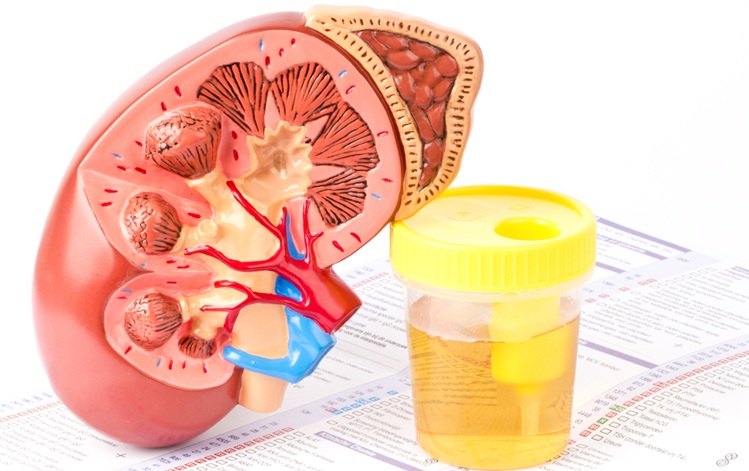Optical Biosensor Reduces Time for Sepsis Diagnosis
|
By LabMedica International staff writers Posted on 12 Feb 2020 |

Image: Detection and quantification of procalcitonin and C‐reactive protein using detection of inflammatory biomarkers imager (DENIS) (Photo courtesy of Ecole Polytechnique Fédérale de Lausanne).
New point‐of‐care diagnostic devices are urgently needed for rapid and accurate diagnosis, particularly in the management of life‐threatening infections and sepsis, where immediate treatment is key.
A novel portable biosensor based on nanoparticle‐enhanced digital plasmonic imaging has been developed for rapid and sensitive detection of two sepsis‐related inflammatory biomarkers, procalcitonin (PCT) and C‐reactive protein (CRP) directly from blood serum.
Bioengineers from the Ecole Polytechnique Fédérale de Lausanne (Lausanne, Switzerland) and their colleagues drew on recent developments in nanotechnology and on light effects at a nanoscale to create a highly portable, easy-to-use device that can rapidly detect sepsis biomarkers in a patient's bloodstream, and their device takes just a few minutes to deliver a result, like a pregnancy test.
The device employs an optical metasurface, in this case a thin gold sheet containing arrays of billions of nanoholes. The metasurface concentrates light around the nanoholes so as to allow for exceptionally precise biomarker detection. With this type of metasurface, the team can detect sepsis biomarkers in a blood sample with nothing more than a simple LED and a standard CMOS camera. The team began by adding a solution of special nanoparticles to the sample that are designed to capture the biomarkers and then distribute this mixture on the metasurface.
The generated images are used to rapidly determine whether disease biomarkers are present in a sample and, if so, in what concentration. They used the new device to measure the blood serum levels of two important sepsis relevant biomarkers, PCT and CRP. Doctors can use this information to accelerate the triage of sepsis patients, ultimately saving lives. The device was installed at the Vall d'Hebron University Hospital (Barcelona, Spain) and used in blind tests to examine patient samples from the hospital's sepsis bank.
The authors concluded that portable digital nanoparticle‐enhanced plasmonic imager that enables rapid detection of two inflammatory sepsis‐related biomarkers, PCT and CRP. The unique nanoplasmonic mechanism through imaging of single gold nanoparticles (Au‐NPs) binding on the gold nanohole arrays (Au‐NHAs) enables highly sensitive and rapid biomarker detection directly in blood serum. The compact nanoplasmonic reader, built of inexpensive components, weighs less than 1 kg. The study was published on January 23, 2020 in the journal Small.
Related Links:
Ecole Polytechnique Fédérale de Lausanne
Vall d'Hebron University
A novel portable biosensor based on nanoparticle‐enhanced digital plasmonic imaging has been developed for rapid and sensitive detection of two sepsis‐related inflammatory biomarkers, procalcitonin (PCT) and C‐reactive protein (CRP) directly from blood serum.
Bioengineers from the Ecole Polytechnique Fédérale de Lausanne (Lausanne, Switzerland) and their colleagues drew on recent developments in nanotechnology and on light effects at a nanoscale to create a highly portable, easy-to-use device that can rapidly detect sepsis biomarkers in a patient's bloodstream, and their device takes just a few minutes to deliver a result, like a pregnancy test.
The device employs an optical metasurface, in this case a thin gold sheet containing arrays of billions of nanoholes. The metasurface concentrates light around the nanoholes so as to allow for exceptionally precise biomarker detection. With this type of metasurface, the team can detect sepsis biomarkers in a blood sample with nothing more than a simple LED and a standard CMOS camera. The team began by adding a solution of special nanoparticles to the sample that are designed to capture the biomarkers and then distribute this mixture on the metasurface.
The generated images are used to rapidly determine whether disease biomarkers are present in a sample and, if so, in what concentration. They used the new device to measure the blood serum levels of two important sepsis relevant biomarkers, PCT and CRP. Doctors can use this information to accelerate the triage of sepsis patients, ultimately saving lives. The device was installed at the Vall d'Hebron University Hospital (Barcelona, Spain) and used in blind tests to examine patient samples from the hospital's sepsis bank.
The authors concluded that portable digital nanoparticle‐enhanced plasmonic imager that enables rapid detection of two inflammatory sepsis‐related biomarkers, PCT and CRP. The unique nanoplasmonic mechanism through imaging of single gold nanoparticles (Au‐NPs) binding on the gold nanohole arrays (Au‐NHAs) enables highly sensitive and rapid biomarker detection directly in blood serum. The compact nanoplasmonic reader, built of inexpensive components, weighs less than 1 kg. The study was published on January 23, 2020 in the journal Small.
Related Links:
Ecole Polytechnique Fédérale de Lausanne
Vall d'Hebron University
Latest Technology News
- Cell-Sorting Device Uses Electromagnetic Levitation to Precisely Direct Cell Movement

- Embedded GPU Platform Enables Rapid Blood Profiling for POC Diagnostics
- Viral Biosensor Test Simultaneously Detects Hepatitis and HIV
- Acoustofluidic Device to Transform Point-Of-Care sEV-Based Diagnostics
- AI Algorithm Assesses Progressive Decline in Kidney Function
- Taste-Based Influenza Test Could Replace Nasal Swabs with Chewing Gum
- 3D Micro-Printed Sensors to Advance On-Chip Biosensing for Early Disease Detection
- Hybrid Pipette Combines Manual Control with Fast Electronic Aliquoting
- Coral-Inspired Capsule Samples Hidden Bacteria from Small Intestine
- Rapid Diagnostic Technology Utilizes Breath Samples to Detect Lower Respiratory Tract Infections
Channels
Clinical Chemistry
view channel
VOCs Show Promise for Early Multi-Cancer Detection
Early cancer detection is critical to improving survival rates, but most current screening methods focus on individual cancer types and often involve invasive procedures. This makes it difficult to identify... Read more
Portable Raman Spectroscopy Offers Cost-Effective Kidney Disease Diagnosis at POC
Kidney disease is typically diagnosed through blood or urine tests, often when patients present with symptoms such as blood in urine, shortness of breath, or weight loss. While these tests are common,... Read moreMolecular Diagnostics
view channel
Urine Test Detects Early Stage Pancreatic Cancer
Pancreatic cancer remains among the hardest cancers to detect early. In the UK, around 10,000 people are diagnosed each year, but only 5% survive beyond five years. Late diagnosis is a major factor—more... Read more
Genomic Test Could Reduce Lymph Node Biopsy Surgery in Melanoma Patients
Accurately determining whether melanoma has spread to the lymph nodes is crucial for guiding treatment decisions, yet the standard procedure—sentinel lymph node biopsy—remains invasive, costly, and unnecessary... Read moreHematology
view channel
Viscoelastic Testing Could Improve Treatment of Maternal Hemorrhage
Postpartum hemorrhage, severe bleeding after childbirth, remains one of the leading causes of maternal mortality worldwide, yet many of these deaths are preventable. Standard care can be hindered by delays... Read more
Pioneering Model Measures Radiation Exposure in Blood for Precise Cancer Treatments
Scientists have long focused on protecting organs near tumors during radiotherapy, but blood — a vital, circulating tissue — has largely been excluded from dose calculations. Each blood cell passing through... Read more
Platelets Could Improve Early and Minimally Invasive Detection of Cancer
Platelets are widely recognized for their role in blood clotting and scab formation, but they also play a crucial role in immune defense by detecting pathogens and recruiting immune cells.... Read more
Portable and Disposable Device Obtains Platelet-Rich Plasma Without Complex Equipment
Platelet-rich plasma (PRP) plays a crucial role in regenerative medicine due to its ability to accelerate healing and repair tissue. However, obtaining PRP traditionally requires expensive centrifugation... Read moreImmunology
view channel
Blood-Based Liquid Biopsy Model Analyzes Immunotherapy Effectiveness
Immunotherapy has revolutionized cancer care by harnessing the immune system to fight tumors, yet predicting who will benefit remains a major challenge. Many patients undergo costly and taxing treatment... Read more
Signature Genes Predict T-Cell Expansion in Cancer Immunotherapy
Modern cancer immunotherapies rely on the ability of CD8⁺ T cells to rapidly multiply within tumors, generating the immune force needed to eliminate cancer cells. However, the biological triggers behind... Read moreMicrobiology
view channel
Fast Noninvasive Bedside Test Uses Sugar Fingerprint to Detect Fungal Infections
Candida bloodstream infections are a growing global health threat, causing an estimated 6 million cases and 3.8 million deaths annually. Hospitals are particularly vulnerable, as weakened patients after... Read more
Rapid Sepsis Diagnostic Device to Enable Personalized Critical Care for ICU Patients
Sepsis is a life-threatening condition that occurs when the body’s response to infection spirals out of control, damaging organs and leading to critical illness. Patients often arrive at intensive care... Read morePathology
view channel
New Molecular Analysis Tool to Improve Disease Diagnosis
Accurately distinguishing between similar biomolecules such as proteins is vital for biomedical research and diagnostics, yet existing analytical tools often fail to detect subtle structural or compositional... Read more
Tears Offer Noninvasive Alternative for Diagnosing Neurodegenerative Diseases
Diagnosing and monitoring eye and neurodegenerative diseases often requires invasive procedures to access ocular fluids. Ocular fluids like aqueous humor and vitreous humor contain valuable molecular information... Read moreIndustry
view channel
Puritan Medical Products Showcasing Innovation at AMP2025 in Boston
Puritan Medical Products (Guilford, ME, USA), the world’s most trusted manufacturer of swabs and specimen collection devices, is set to exhibit at AMP2025 in Boston, Massachusetts, from November 11–15.... Read more
Advanced Instruments Merged Under Nova Biomedical Name
Advanced Instruments (Norwood, MA, USA) and Nova Biomedical (Waltham, MA, USA) are now officially doing business under a single, unified brand. This transformation is expected to deliver greater value... Read more







 Analyzer.jpg)












